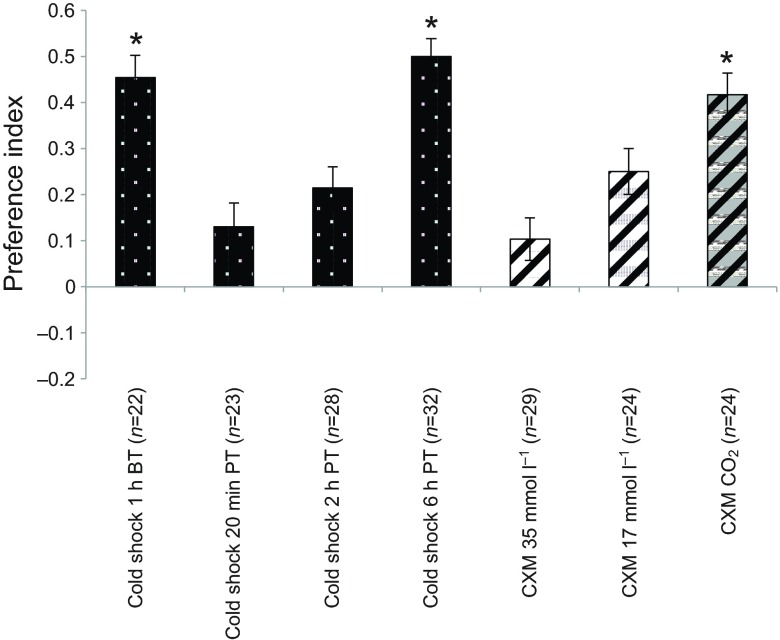Fig. 6.
Preference of individually trained A. aegypti females that were individually tested in the olfactometer and given a choice between two stimuli. Insects exposed to cold shock (white circles on black bars) were tested for their preference between clean air and air loaded with LA. Insects fed on CXM were tested for their preference between clean air and LA (black hatching on white bars) or between clean air and CO2 (2300 ppm above ambient level; black hatching on grey bar). Preference is represented as the preference index computed from the distribution of insects in the olfactometer, and error bars represent the standard errors of the binary distribution. Each bar represents an experimental group: cold shock 1 h BT, trained insects exposed to a cold shock 1 h before training; cold shock 20 min PT, trained insects exposed to a cold shock 20 min post training; cold shock 2 h PT, trained insects exposed to a cold shock 2 h post training; cold shock 6 h PT, trained insects exposed to a cold shock 6 h post training; CXM 35 mmol l−1, trained insects fed on 35 mmol l−1 CXM in 10% sucrose solution during 16–18 h previous to the training session; CXM 17 mmol l−1, trained insects fed on 17 mmol l−1 CXM in 10% sucrose solution during 16–18 h previous to the training session; 35 mmol l−1 CXM CO2; naïve insects fed on 35 mmol l−1 CXM in 10% sucrose solution, and tested for their response to CO2 as a positive control. Asterisks indicate distributions that are significantly different from random (P<0.05).

